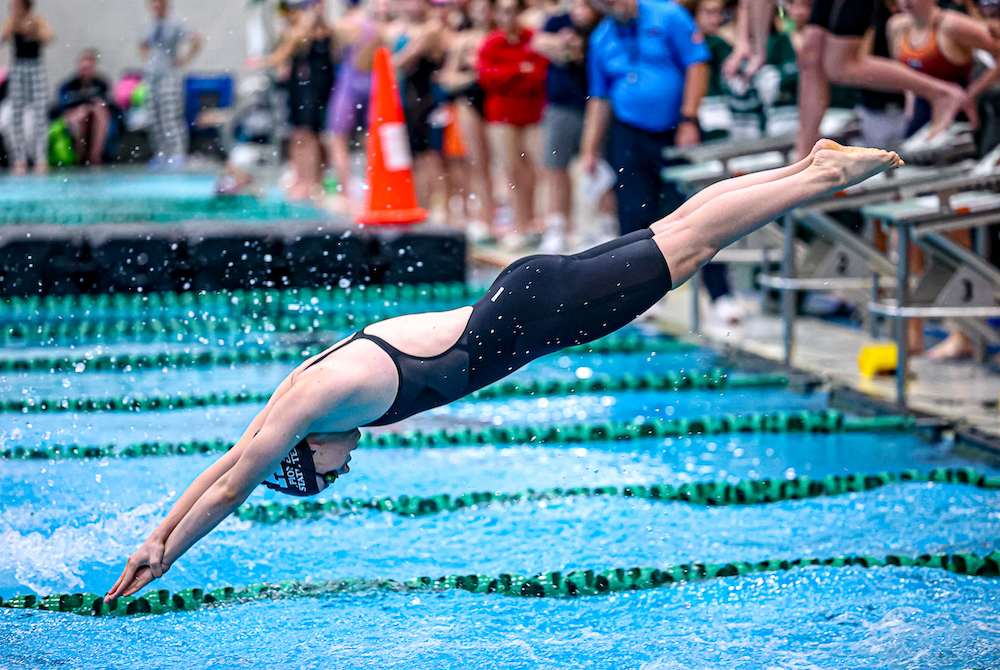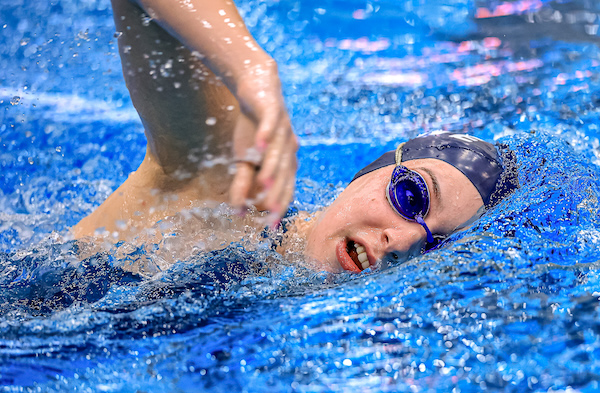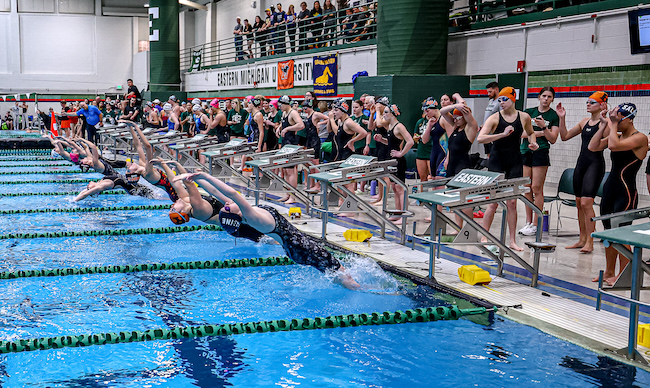
Be the Referee: Swim Finishing Touch
September 19, 2019
This week, MHSAA officials coordinator Sam Davis explains a new rule in swimming that allows for more flexibility when determining when a competitor has finished a race.
Be The Referee is a series of short messages designed to help educate people on the rules of different sports, to help them better understand the art of officiating, and to recruit officials.
Below is this week's segment - Swimming Finishing Touch - Listen
There’s a swimmer-friendly rules change being made in that sport this season. The definition of a legal finish has been changed to allow a competitor to touch any part of the finish end of the lane.
Previously, a swimmer had to contact the touch pad for a legal finish. The touch rule has also been changed to apply during relay races – where prior to this season only the final swimmer had to touch the finish end of the pool.
While the changes may provide some flexibility for swimmers, it does put additional responsibility on lane judges and back-up hand timers to be ready for those occurrences when a swimmer does not contact the touch pad.
Sept. 12: Curbing Gamesmanship By Substitution - Listen
Sept. 5: Football Safety Rules Changes - Listen
Aug. 29: 40-Second Play Clock - Listen

4th-Straight Finals Title Gives Pioneer 4 Straight Seasons Winning Every Meet
By
Tim Robinson
Special for MHSAA.com
November 18, 2023
YPSILANTI – Everyone dreams of going out on top.
Very few did so like Ann Arbor Pioneer captains Stella Chapman and Yan Yee Adler.
They finished their high school swimming careers unbeaten Saturday, as in never having been on a losing team at a high school swim meet, be it duals, conference or MHSAA Finals – a most memorable four-for-four for those seniors.
Ann Arbor Pioneer won its fourth Lower Peninsula Division 1 championship meet in a row, the most consecutive for the Pioneers since they won nine straight from 2000-2008.
“It never gets old,” Pioneer coach Stefanie Kerska said following a celebratory dive into the Jones Natatorium pool. “It was a total team effort from the young rookie swimmers to the veterans to the divers, and it's a really rewarding win for us.”
 Chapman and Adler finished 1-2 in the 200-yard individual medley. Chapman broke her meet record in the 100 backstroke, improving from 53.69 seconds in 2022 to 53.54 on Saturday.
Chapman and Adler finished 1-2 in the 200-yard individual medley. Chapman broke her meet record in the 100 backstroke, improving from 53.69 seconds in 2022 to 53.54 on Saturday.
“Getting first is big,” Chapman said. “To have my best time in the IM and then (improve) on my best time, and backstroke is something I'm really, really happy with.”
Adler emphasized Pioneer’s title was a team effort.
“I think it's just our culture. We really swim for each other,” she said. “And everyone on this team knows that it's a team effort, not an individual effort and none of us would be able to do what we do if it wasn't for the people around us.”
Kerska said her swimmers deserve the credit.
“To ask a group of girls never to take their eye off the prize, (and) never drop the ball is really impressive,” she said. “It was a great team win. This is one of the first ones where, you know, we just came in (with) numbers and we were pretty relentless with the points that we were scoring. So just real rewarding for us.”
Pioneer finished comfortably in first with 301 points.
Grand Haven, which went unbeaten in its dual meet season and tied for the Ottawa-Kent Conference Red championship with Jenison, took second, edging the Wildcats by winning the final race of the day, the 400 freestyle relay.
 “We needed to take at least second place in that 400 free relay for us to be second overall,” Grand Haven coach Doug Thorne said. “And the girls rose to it and won the 400, so it sealed the deal. To come here at the state meet and take second place is just beyond our wildest dreams. We're really thrilled.”
“We needed to take at least second place in that 400 free relay for us to be second overall,” Grand Haven coach Doug Thorne said. “And the girls rose to it and won the 400, so it sealed the deal. To come here at the state meet and take second place is just beyond our wildest dreams. We're really thrilled.”
The Buccaneers were led by Rosalie Springer, who won the 100 freestyle for the second time in three years and swam the anchor leg on the 400 free relay.
Sophia Umstead won the butterfly and breaststroke for Jenison, while Grace Albrecht won the 50 freestyle and was part of the 200 freestyle relay team that set a meet record in 1:32.85.
But the day, as it has the last four years, belonged to Pioneer.
“It’s definitely bittersweet,” Adler said of the end of her high school career. ”I love this team and I love what we've been able to do. But I know everyone's gonna be all good. I'm very confident in the team in the future and years to come. So they're in great hands.”
(PHOTOS by High School Sports Scene.)

